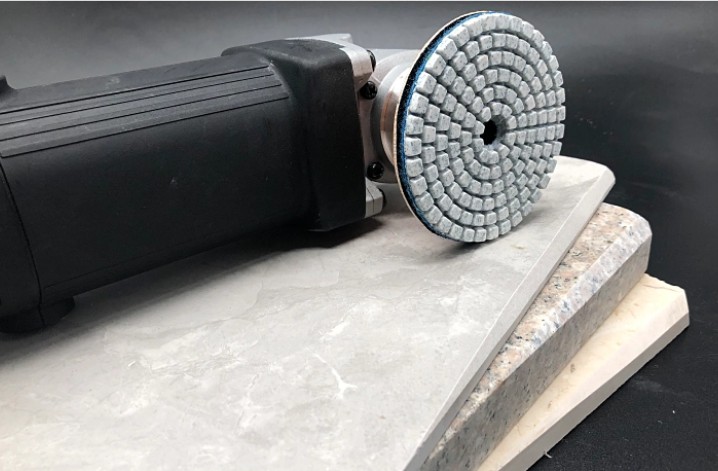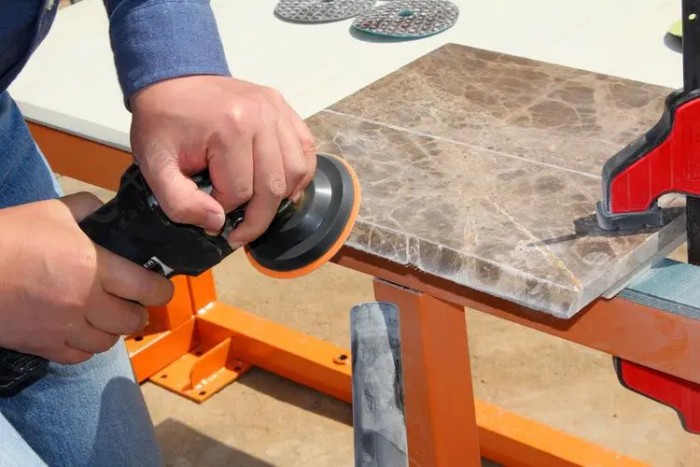What is the difference between dry grinding and wet grinding of stone?
The Difference Between Dry Grinding And Wet Grinding
1. Different grinding discs
Dry grinding and wet grinding are two common methods used in the field of material processing, especially in the case of grinding stones and other hard surfaces. Both methods have their own advantages and are suitable for different applications. Understanding the difference between dry and wet grinding is critical to achieving the desired results and maintaining the longevity of your grinding equipment.
The main difference between dry and wet grinding is the use of water during the grinding process. When dry grinding, no water is added to the grinding surface, while when wet grinding, water is used to cool the grinding surface to reduce the heat generated during the grinding process. This fundamental difference has a significant impact on the performance and requirements of grinding equipment.
One of the main differences between dry and wet grinding is the type of grinding disc used. Most mainstream grinding discs are made of synthetic diamond particles and a resin bond. Diamond, known for its hardness and durability, is commonly used in these discs, while a resin binder provides the necessary adhesion and support for the diamond particles. In dry grinding, the high temperatures generated during processing require the use of high-quality, high-temperature-resistant resins in the grinding disc to ensure its stability and performance. Wet grinding, on the other hand, allows the use of grinding discs with slightly less demanding compositions because the addition of water accelerates heat dissipation and reduces strain on the grinding discs.
When dry grinding, the absence of water means that the heat generated during the process cannot be effectively dissipated, resulting in a higher grinding surface temperature. This can cause the grinding disc to deform and twist, especially if it is of poor quality. In contrast, wet grinding with the addition of water helps maintain lower temperatures, reducing the risk of grinding disc damage and ensuring a more consistent and controlled grinding process.
Notably, the discs made from high-quality resin can be used for both dry and wet sanding, providing versatility and durability for a variety of applications. However, regular wet sanding discs are not suitable for long periods of dry grinding as the absence of water can cause overheating and potential damage to the disc.

2. Wet grinding causes less damage to stone
Wet grinding is a technique used in the stone processing industry that is noted for its ability to minimize damage to the stone during the grinding process. This method involves the use of water during the grinding process, which has been found to reduce the high temperatures generated during grinding, thereby reducing potential damage to the structural integrity of the stone.
One of the main problems with traditional dry grinding methods is the high temperatures generated during the process. This high temperature can cause damage to the structural crystals of the stone, causing problems such as loss of luster, chipping, and chalking. These problems can seriously affect the quality and appearance of the stone, making it less suitable for a variety of applications.
The composition of a grinding stone plays a crucial role in its susceptibility to damage during the grinding process. For example, marble is a stone widely used in architecture and sculpture, and its main component is calcium carbonate. When ground at high temperatures, calcium carbonate undergoes a chemical transformation, turning into calcium oxide through a process called calcination. This transformation weakens the stone and makes it more susceptible to damage.
However, introducing water during the grinding process can alleviate these problems. By adding water during the grinding process, the dissipation of heat is accelerated, effectively reducing potential damage to the stone. The water acts as a coolant, absorbing the heat generated during grinding and preventing it from reaching levels that could damage the stone's structure.
3. The gloss of wet grinding is softer and more beautiful
During the grinding and polishing process of stone, the interaction between light and the stone's surface plays a vital role in determining the final visual appeal. It is generally believed that the light reflected from the stone surface at high temperatures is different from the light reflected at natural temperatures. The luster produced at natural temperatures is soft and lustrous, creating a visually appealing sheen that enhances the natural beauty of the stone.
Conversely, the heat generated during the dry grinding process can adversely affect the crystal structure of the stone, causing glare, ablation, drying, and a lack of transparency in the luster. This is especially true for dark-colored gemstones, where high temperatures can cause the stone to lose its natural color and luster, resulting in a less-than-ideal appearance.
The impact of dry grinding on the stone surface is particularly noticeable on black stone, which tends to lose its original color and turn white when subjected to the high temperatures generated during the grinding process. Likewise, beige gemstones may exhibit a lack of clarity and a dry, dull luster when dry polished, due to the damaging effects of high-temperature ablation during the polishing process.
In contrast, wet sanding provides a gentler, more protective method for working with stone. By introducing water during the grinding process, the heat generated by friction is effectively dissipated and potential damage to the crystal structure of the stone is reduced. This produces a softer, more natural, and visually appealing sheen that enhances the stone's inherent beauty without compromising its integrity.
The benefits of wet grinding are particularly evident when working with dark gemstones and clear jade, where retaining color, transparency and natural luster is crucial. The use of water during the grinding process helps preserve the original properties of the stone, resulting in a luster that is visually stunning and authentic to the stone's natural shape.

When Should Stone Be Dry Ground?
1. Stones that have not been protected
Unprotected gemstones, such as those that have been polished, mirror-finished, or severely aged, require special attention before applying a protectant. In these cases, the stone surface needs to be opened to facilitate the absorption of the protective agent. This involves grinding away any crystallized, glazed, or aged layers from the surface to create a clean and receptive surface for subsequent processing.
Choosing dry polishing to open up the unprotected surface of a gemstone serves several important purposes. First, it ensures that the stone is clean and dry, providing the best foundation for the application of protective agents. This step is essential for effective and long-lasting stone protection, as a clean, dry surface allows for better adhesion and absorption of the protective agent.
In addition, unprotected stone easily absorbs water. If wet sanding is used to open the stone surface, the water absorption of the stone will lead to extended construction time and potential complications during the application of the protective agent. Dry sanding alleviates these problems by avoiding the introduction of moisture into the stone, resulting in a more controlled and efficient surface treatment process.
2. Grinding and polishing process
Dry grinding is particularly beneficial in speeding up the polishing of stone, especially after the initial wet grinding and leveling stages. By dry grinding the stone to a fine 1000 mesh, the subsequent polishing process can be significantly enhanced.
During the wet sanding process, the stone absorbs moisture, causing a damp surface. However, after reaching the 1000 mesh grade, the stone can be semi-dry ground or fully dry ground with little or no water added. The move to dry grinding is practical and advantageous for a number of reasons.
First, dry grinding after 1000 mesh grade can remove excess moisture in the stone. The heat generated during dry grinding accelerates the evaporation of water and effectively dries the stone in advance. This not only saves time but also prepares the stone for subsequent crystallization and glaze sealing operations.
Additionally, dry grinding at this stage allows for a more efficient and effective polishing process. The absence of excess moisture on the surface of the stone allows polishes and sealants to adhere better, resulting in a smoother, glossier surface. Additionally, dry sanding helps prevent potential issues like water stains or uneven drying that can affect the overall quality of your polished stone.
3. Walls, corners, countertops
When it comes to stone finishing for walls, corners, and countertops, the dry grinding method is often preferred. Dry grinding is the process of using abrasive tools to grind and polish stone without the use of water. This method is particularly useful in areas where water grounding is not feasible or practical, such as walls and corners.
One of the main reasons why walls should be dry sanded is that they are not suitable for water grounding. Imagine a scenario where a client has a beautifully designed living room with brand-new furniture. In this case, using a hand polisher that splashes water slurry everywhere can be a disaster. Not only does it create a mess, but it can also damage the surrounding area and furniture. Dry sanding eliminates this problem by providing a clean and controlled method of polishing and finishing walls without the need for water.
After the initial stone grinding process, edge finishing work becomes critical, especially in areas that larger machines cannot reach, such as corners and tight spaces. Dry sanding allows for precise and detailed work in these areas, ensuring the entire surface is polished to perfection. Additionally, dry sanding is ideal for addressing lines, and small imperfections, and repairing countertops. The convenience and precision offered by dry grinding make it the first choice for these specific applications.
In addition to the practical advantages, dry grinding also has environmental benefits. By eliminating the need for water, this method reduces water consumption and minimizes slurry waste generation. This is consistent with sustainable and environmentally friendly practices, making dry grinding a responsible choice for stone finishing projects.
 English
English  Português
Português  русский
русский  Chinese
Chinese  French
French  Japanese
Japanese  Spanish
Spanish 



